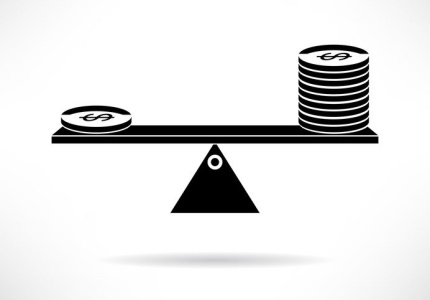Last week, the forced unwinding of the Archegos Capital Management hedge fund put fears of a market collapse into investors’ minds. While it appears to have been an isolated case, the fund’s collapse vividly points out the dangers of using leverage to boost investment returns. Let’s discuss how excess leverage can turn declines in security prices into a complete nightmare.
As an individual investor, you can use leverage in a margin-authorized brokerage account. Buying shares “on margin” lets you borrow money from your broker to own more securities in your account than you have capital in that account.
In a regular margin brokerage account, you can borrow up to 50% to buy securities. This account feature means if you have a $50,000 account, you can buy $100,000 worth of marginable securities. Put another way, you can leverage your capital one time, or at 100% leverage. The brokers look at the 50% number, but you should be aware that you are 100% leveraged at the max margin.
Using leverage amplifies the gains or losses in your account. For example, if your stocks rise 10%, with the illustration above, the account value will be $110,000. You owe $50,000 to the broker for the margin loan, leaving equity of $60,000. That’s $10,000, or a 20% gain, on your $50,000 of capital.
Suppose your margined brokerage account drops, the leverage increases, and your equity decreases. Brokers set a maintenance margin, usually 30%. Using the $50,000 starting account, leveraged up to $100,000, if the value drops to roughly $72,000, the equity will be 30%, with 70% of the account being the margin loan. When the equity drops below 30%, the broker will issue a margin call, forcing you to sell securities to reduce the size of a margin loan.
The brutal truth is that if you get a margin call, you have lost 60% of your capital, and the broker will force you into selling and locking in the losses.
As a hedge fund, Archegos operated under much looser margin rules. I read that the $30 billion fund was leveraged to five times its equity, which could mean that the fund owned $30 billion of stocks, with only $5 billion of its actual capital invested. Archegos borrowed the other $25 billion from multi-national banks.
At less than a 20% drop in its portfolio, the hedge fund was basically out of business. From there, the banks were 100% on the hook, and they quickly sold the fund’s assets to protect themselves. As the stock prices fell due to the deleveraging, slower banks lost more money.
Why the bankers would allow Archegos to employ so much leverage (greed!) is a discussion for another day. Today, I want to emphasize two points.
First, that hedge fund returns are often a matter of luck. When you see the end-of-year average returns that look great, those returns were from the hedge funds that survived. The ones that went broke don’t show up in the yearly numbers. While not all hedge funds use excess leverage, it is a shortcut that works well when it works. And produced financial disaster when it doesn’t.
In your own investing, don’t get overleveraged. Your stock brokerage account will keep you from losing more than about 60% of your money. However, I suspect there are many “low information” traders taking out personal loans to buy bitcoin or trade on Robinhood. Odds are things will end badly for traders using unauthorized leverage.
If you want to use margin loans, do so in moderation. Use less than the broker maximum. Don’t borrow outside money to bet on a “sure thing.” It probably isn’t, and you could end up losing a lot more than your investment money.






